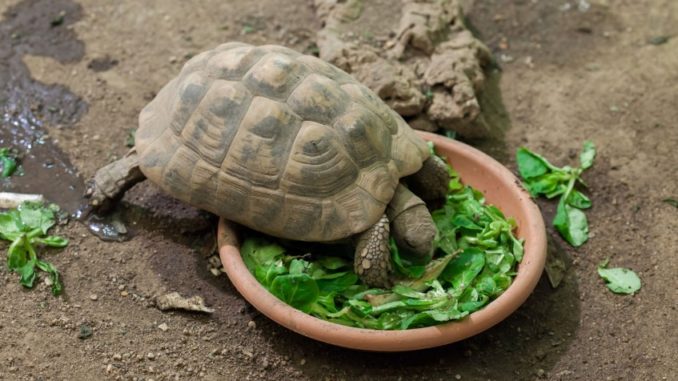
Tortoise keepers around the world all face one unique problem: identifying edible and safe plants for their tortoises. These animals are unique, which means that their feeding habits are also different from that of other animals. Given that they have to spend most of their time in an enclosure, it is up to the keeper to find them safe weeds and plants. The weeds and plants discussed below are considered safe and non toxic for their consumption.
Aloe Vera
Aloe Vera is considered great for tortoises. To make it easier for the turtle to eat it, make sure that you get to slice it into pieces.
Antirrhinum – Florets & Leaves
Also referred to as a snapdragon. Its Florets and leaves are ideal for a varied diet as the snapdragon is not known to be a hazard.
Aubretia – Florets & Leaves
Ideal for feeding the turtle during the early spring months. They often begin to grow before the other weeds.
Bindweed – Florets & Leaves
The plant itself has large Florets and leaves and is very strong. Some keepers have reported that it may contain some hallucinogens.
Bramble – Leaves Only
Only use the leaves from the Bramble plant to feed your turtle. While at it, confirm that the thorns on the lower side of the leaves have been removed.
Cactus, Opuntia (Prickly Pear/Indian Fig)
Similar to Aloe Vera. Tortoises love the cactus plant. However, make sure that you only use the varieties that do not have any spines on them.
Campanula
You can plant a low trailing or low growing campanula on a pot placed inside the tortoise’s enclosure. Allow it to hang low so that it is within your pets’ reach.
Chickweed
Chickweed is edible and tends to grow in abundance. It comes with tiny little seeds in the places that used to hold the white Florets.
Clover – Florets & Leaves (Both Red and White)
Clovers are high in protein making them an ideal addition to the current diet. The high protein content also means that you should not feed baby turtles on clovers alone.
Dandelion – Florets & Leaves
It is a staple for many and is loved by many keepers. It has large leaves that are easily recognisable.
Dead Nettle – Leaves
It can be found in gardens as well as out in the wild. It grows in varying habitat which means that you do not have to look for too long.
Gazania – Florets & Leaves
They not only looked attractive when growing in a garden, but they are also loved by these creatures. For a constant supply, allow them to establish themselves. You could then pull a leaf or two from each plant every day.
Geranium Species (Perrenial) – Leaves & Florets
It is considered to be quite vigorous. It will provide Florets and foliage before bedding plants can mature.
Hebe – Florets and Occasional Leaves
Ideal for planting in enclosures located outside. They are known for providing shade to the animals.
Hibiscus – Florets and Occasional Leaves
Your tortoise will absolutely love these Florets. As they begin growing, start pulling them out one by one and feeding it to them.
Honeysuckle – Florets
Its Florets are available in plenty in the early summer months.
Hosta – Leaves
The leaves are not considered a favourite. However, you can always use a single leaf to alter the diet every once in a while.
Mallow – Florets & Leaves
Ideal for use in an enclosure. The plant is bushy and attractive in appearance.
Forget-Me-Nots – Florets & Leaves
Ideal for use in feeding the tortoise during the early spring months
Mulberry – Leaves
A mulberry tree will help provide shade for the yards. The leaves will act as food for the young and developing tortoises.
Nasturtium – Florets & Leaves
If allowed to establish themselves, the plants will grow very well. You will, however, have a very difficult time trying to get rid of the caterpillars.
Osteospermum – Florets and Occasional Leaves
Considered ideal food for desert dwelling tortoises. It is also great for Sulcata, Russian, Greeks and other species that live in marginalised regions.
Pansies – Florets & Leaves
If allowed to establish themselves in the summer season, they act as great food for the autumn season.
Pelargonium – Flowers & Leaves
It provides good colour and shade in cascading and upright varieties. Its leaves and flowers are all edible.
Petunia – Flowers & Leaves
One of the most vigorous foods you will ever find. Use it as a bedding plant, and it will provide leaves and flower for the entire summer season.
Plantain
Considered a popular stable by many keepers. It contains lots of fibre and can be stored for up to seven days in a fridge.
Rose – Petals Only
Rose petals are safe for tort consumption as long as they are free from chemical and pesticides.
Sow Thistle – Flowers & Leaves
Considered a favourite for many torts. The sow thistle given to the tort can also be slightly prickly.
Strawberry (Wild and Cultivated) – Leaves & Flowers
Young leaves of cultivated or wild strawberry plants are considered ideal for a tort. They can be given to it as a varied diet.
Vetch
While looking at the tort feeding table, you should note that variety is important. Vetch, for instance, has lots of nutrients. You can grow its seeds outside the enclosure.
Viola/Violet – Flowers & Leaves
This plant can easily grow in the winter or the autumn season and its safe for tortoise consumption.
There is a lot of misinformation and confusion when it comes to feeding turtles. Each species, e.g., the Hermann turtle will have its preferences. You, therefore, need to try and vary the diet you use. Try and combine hibiscus, vegetables, succulents, and other live, edible plants and feeds. The best diet ought to be well blended.

Leave a Reply